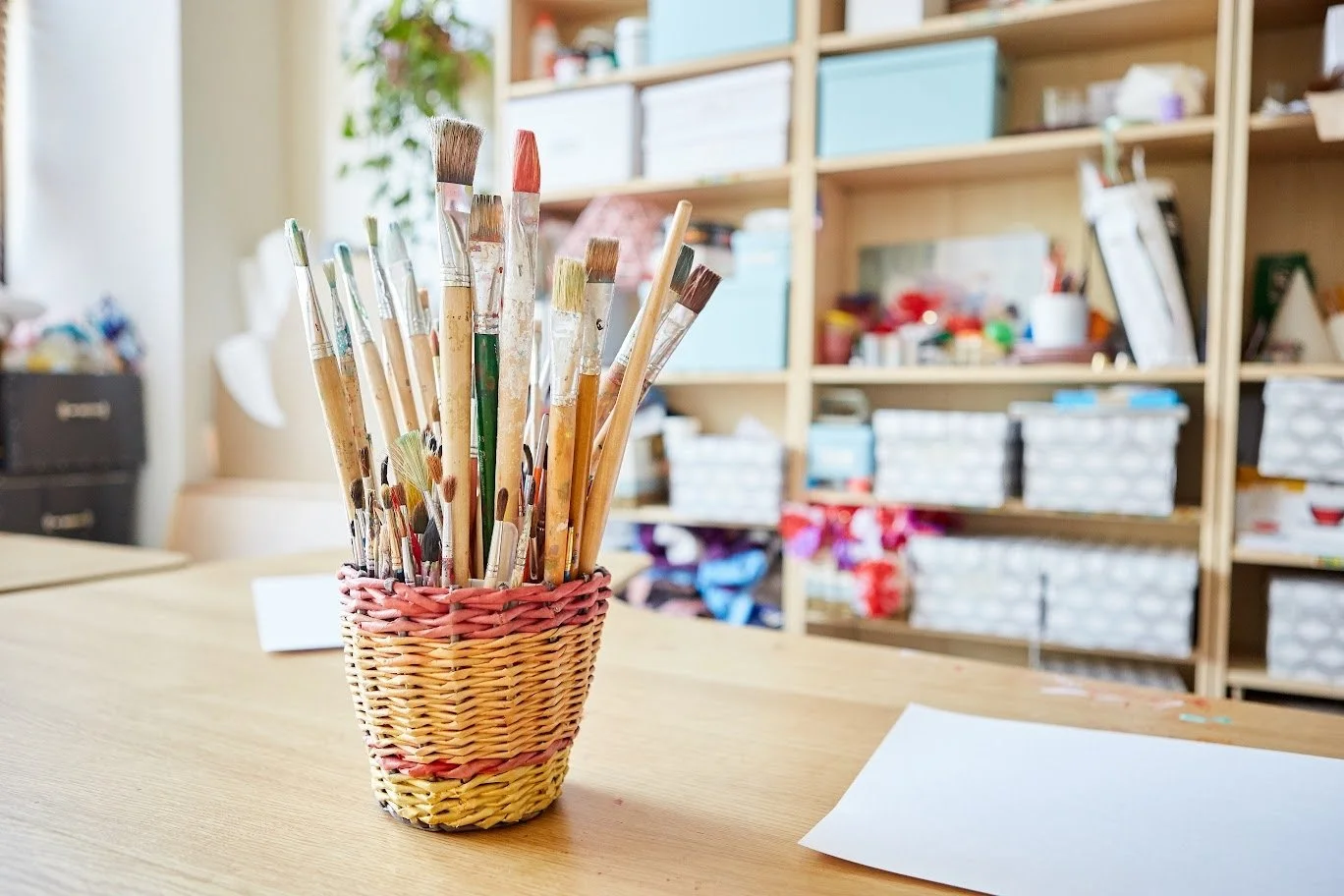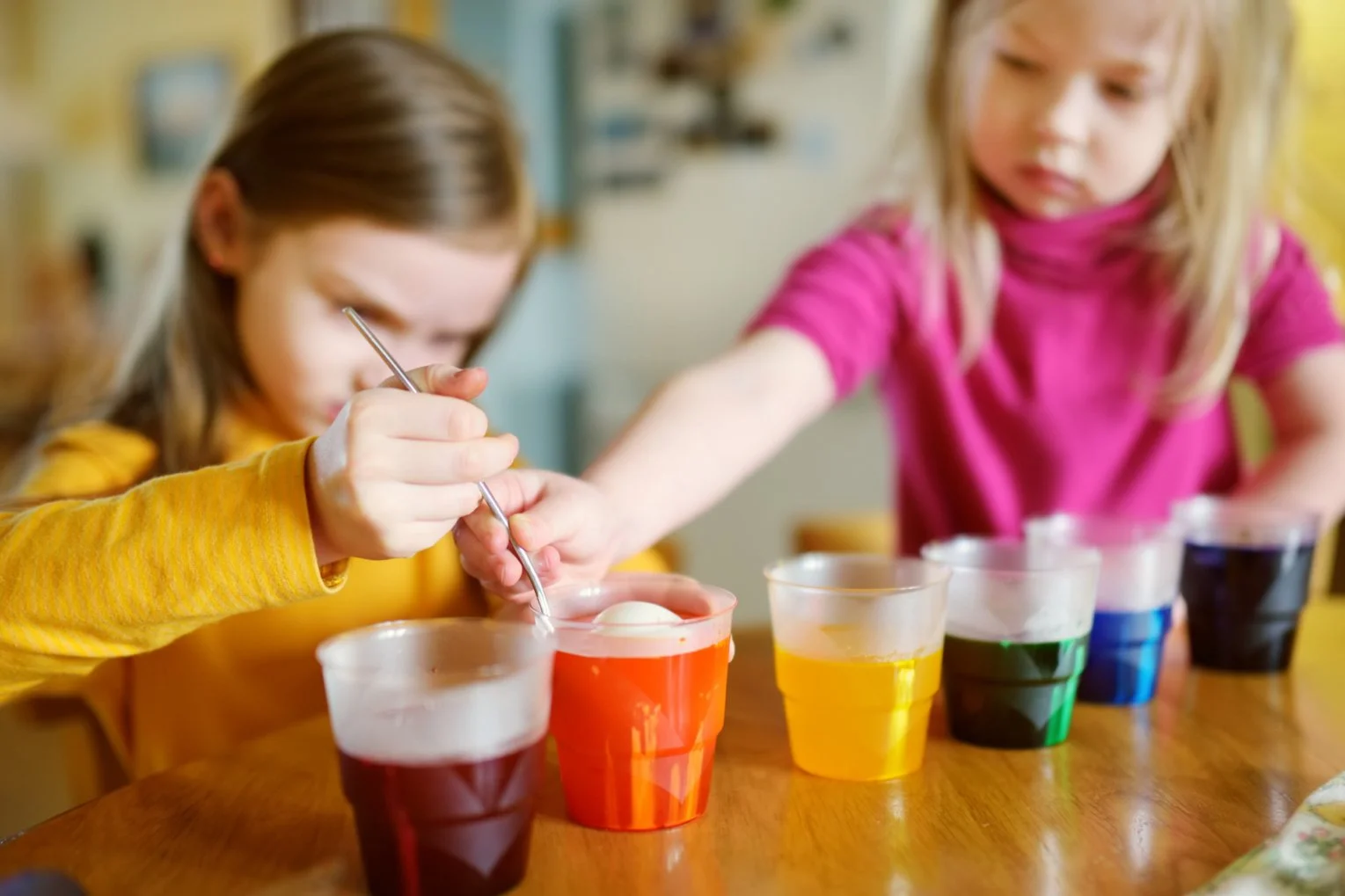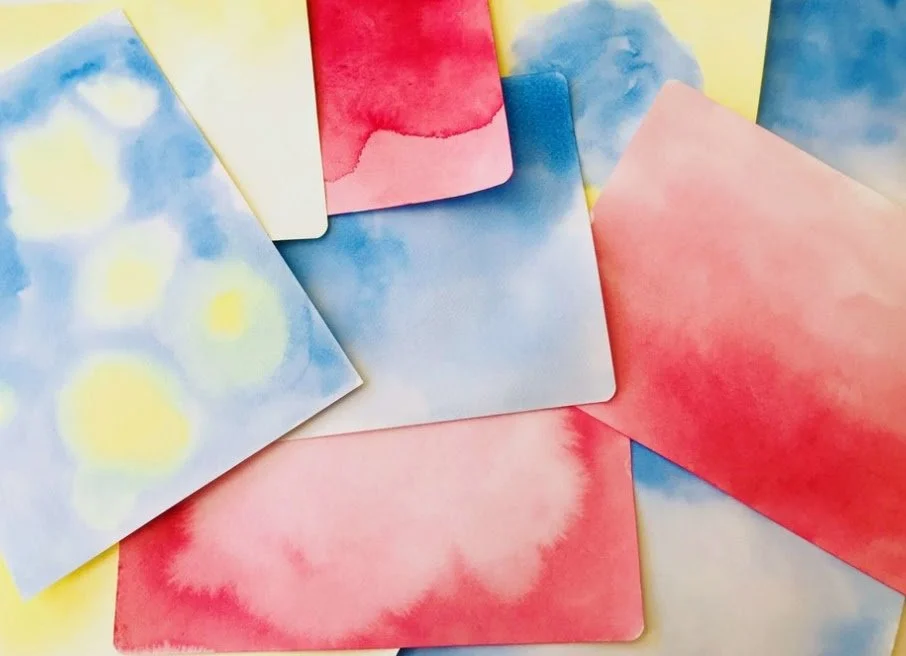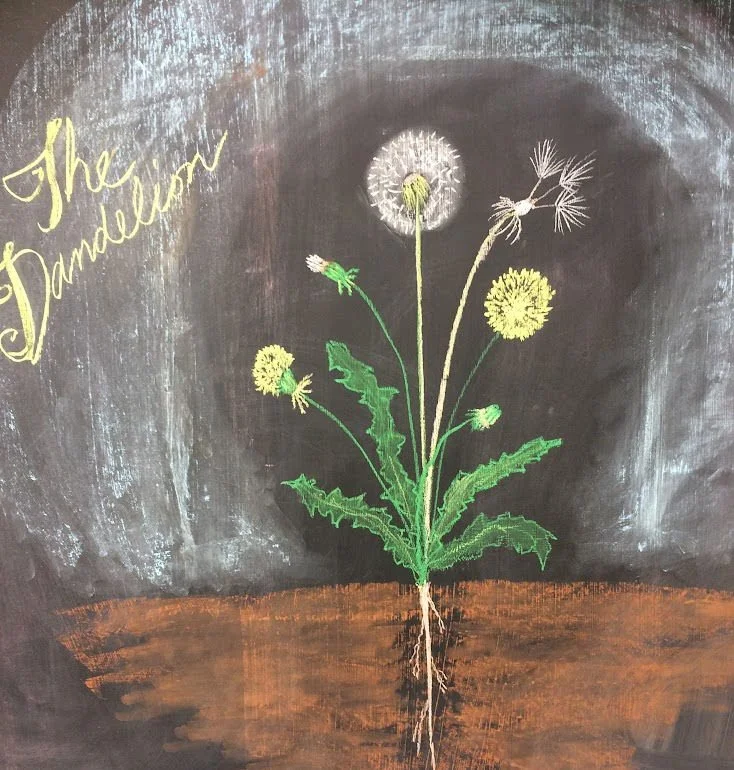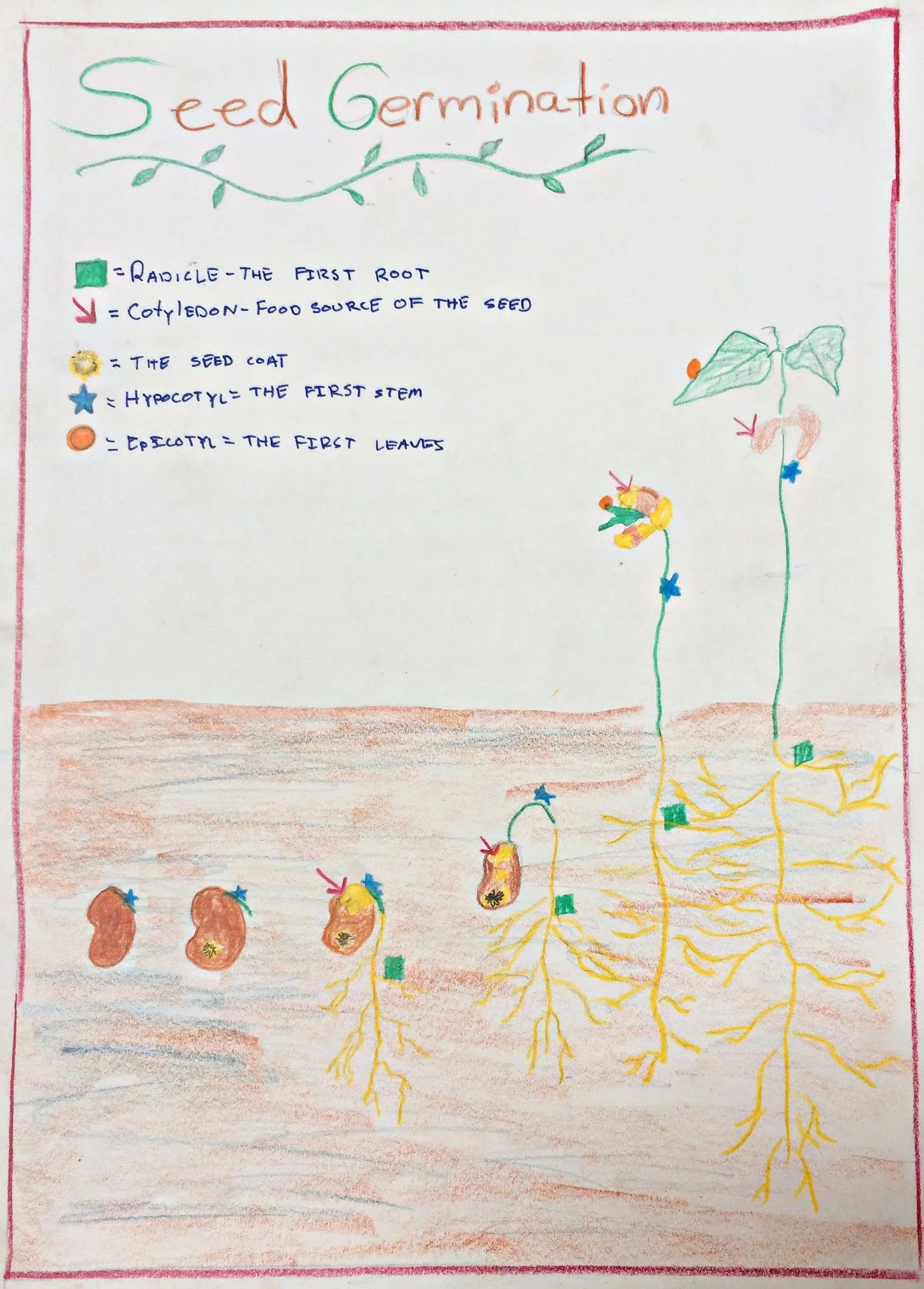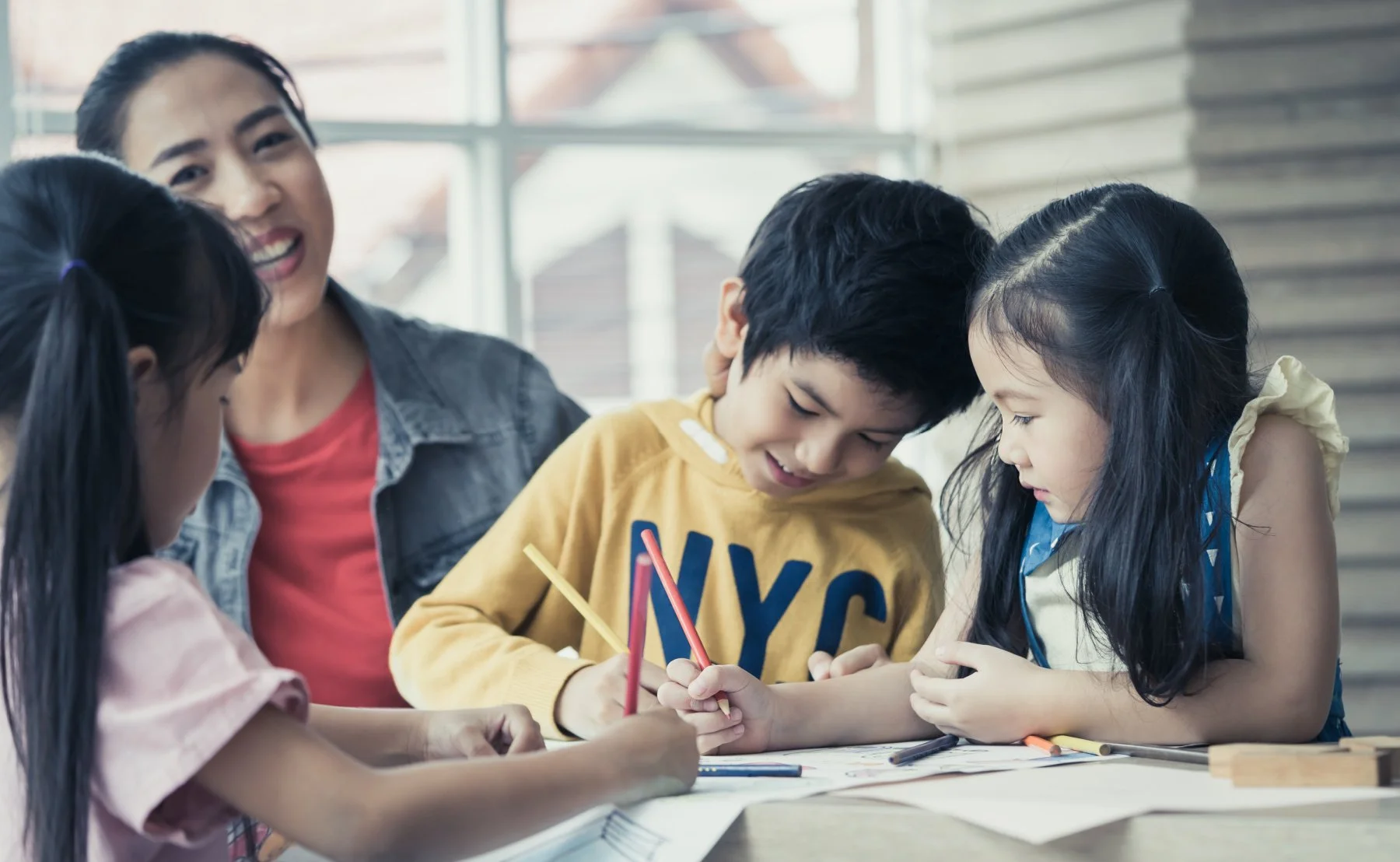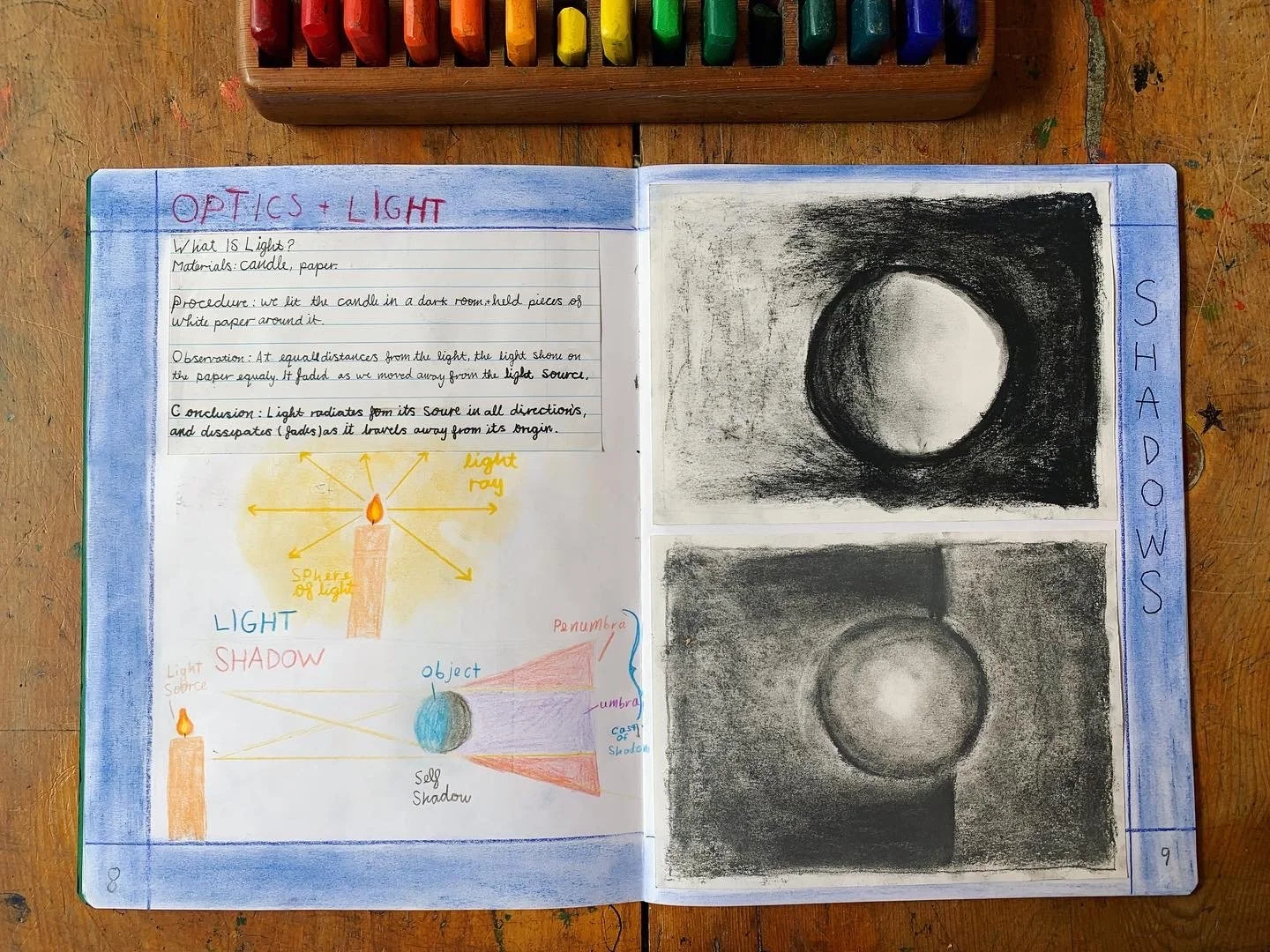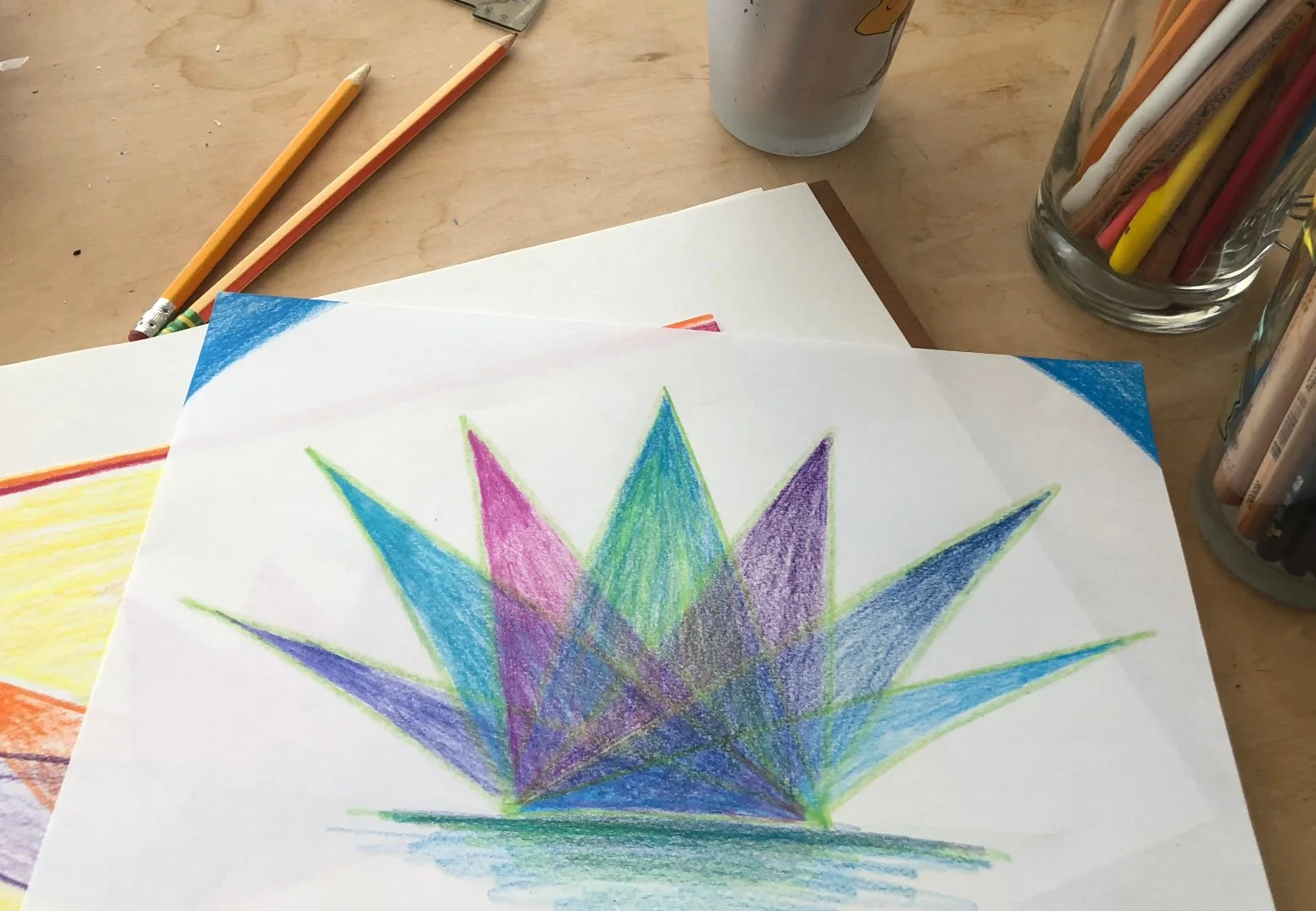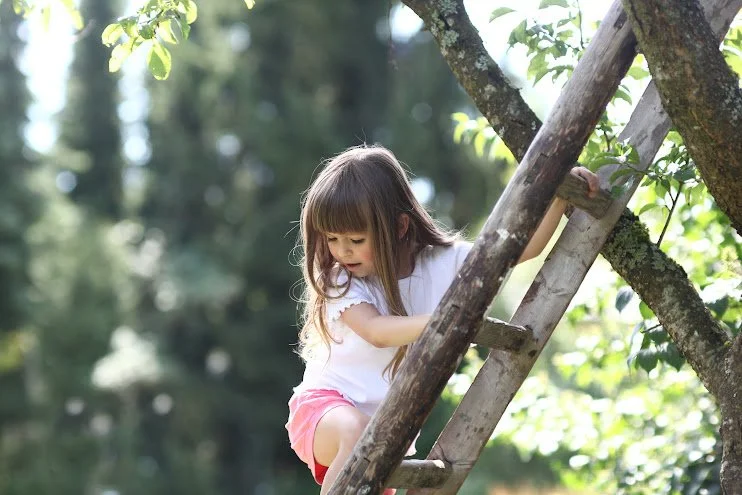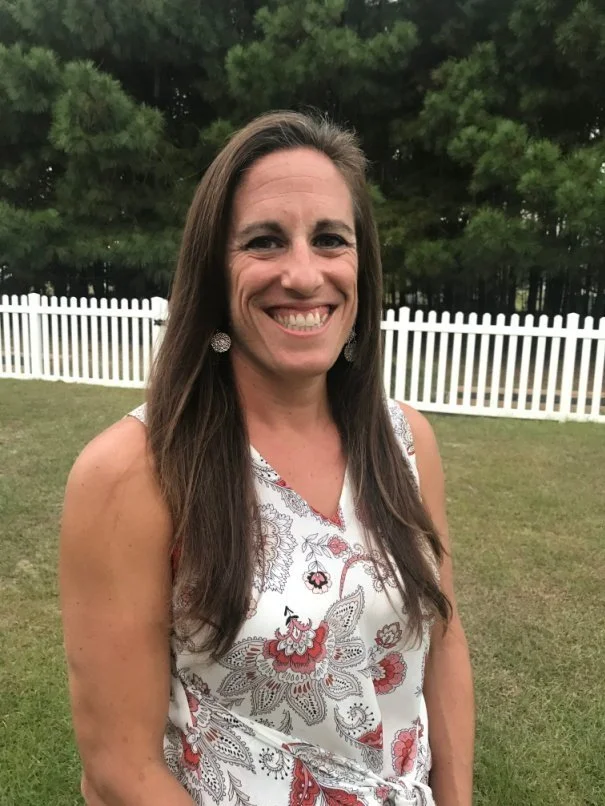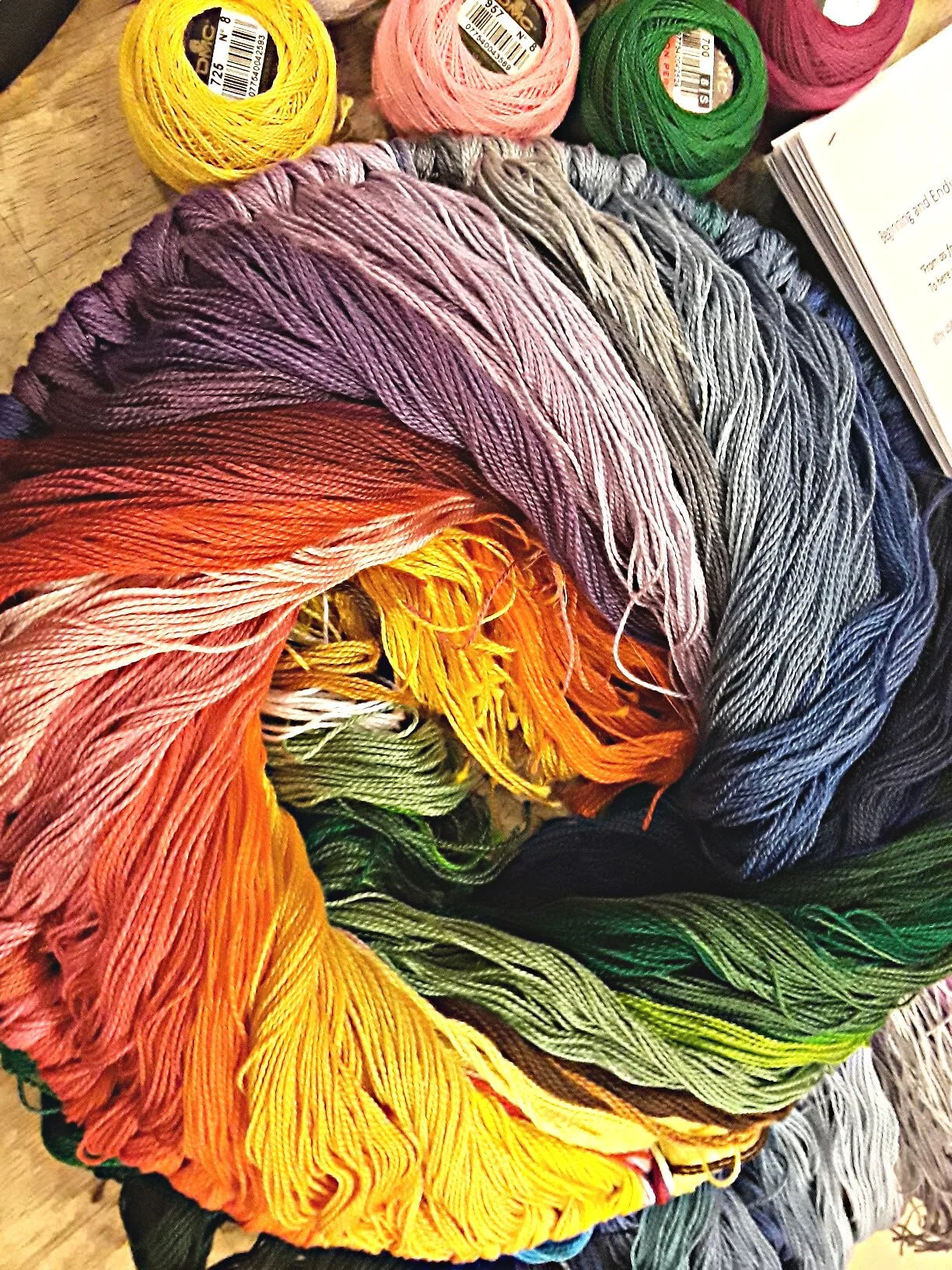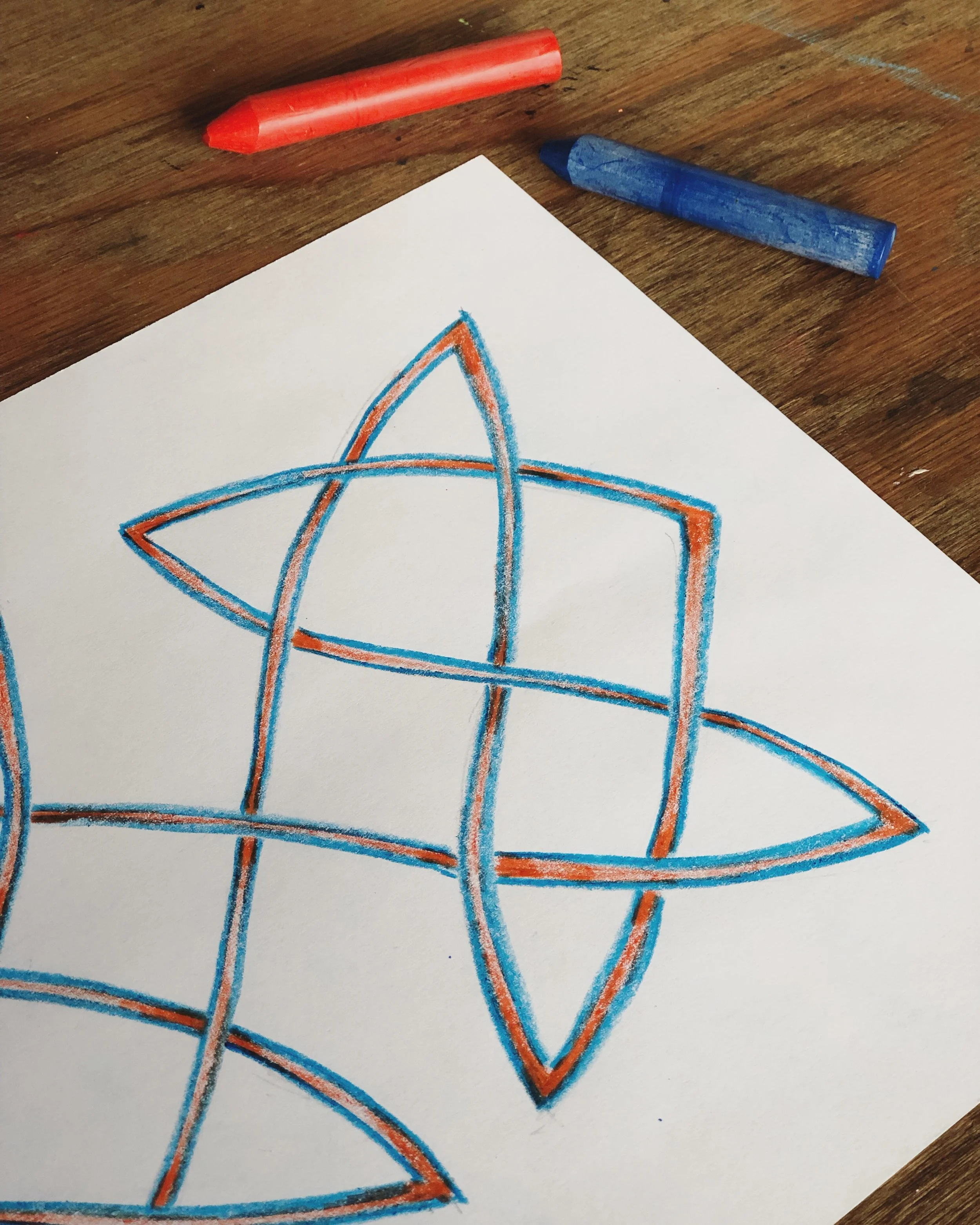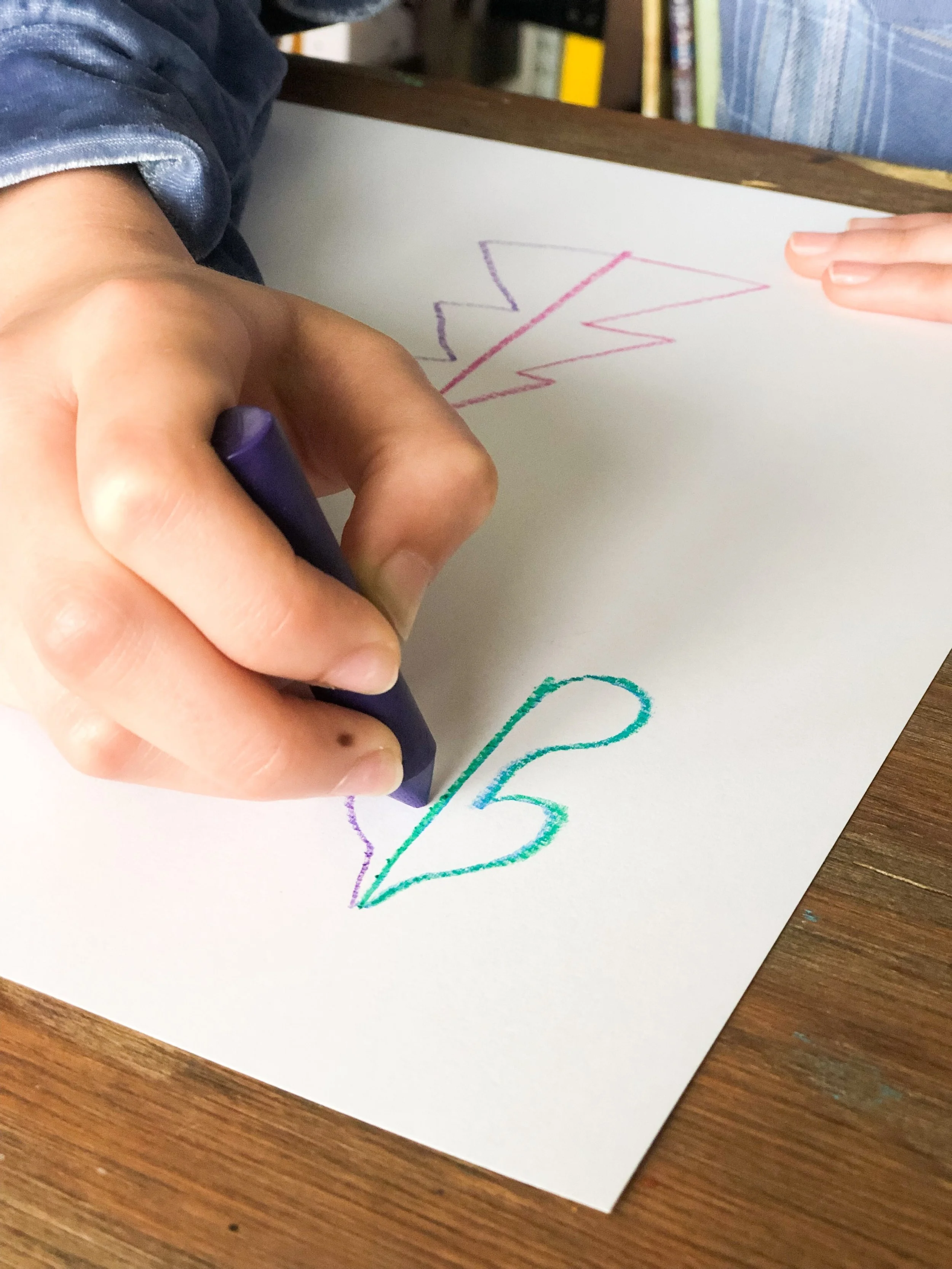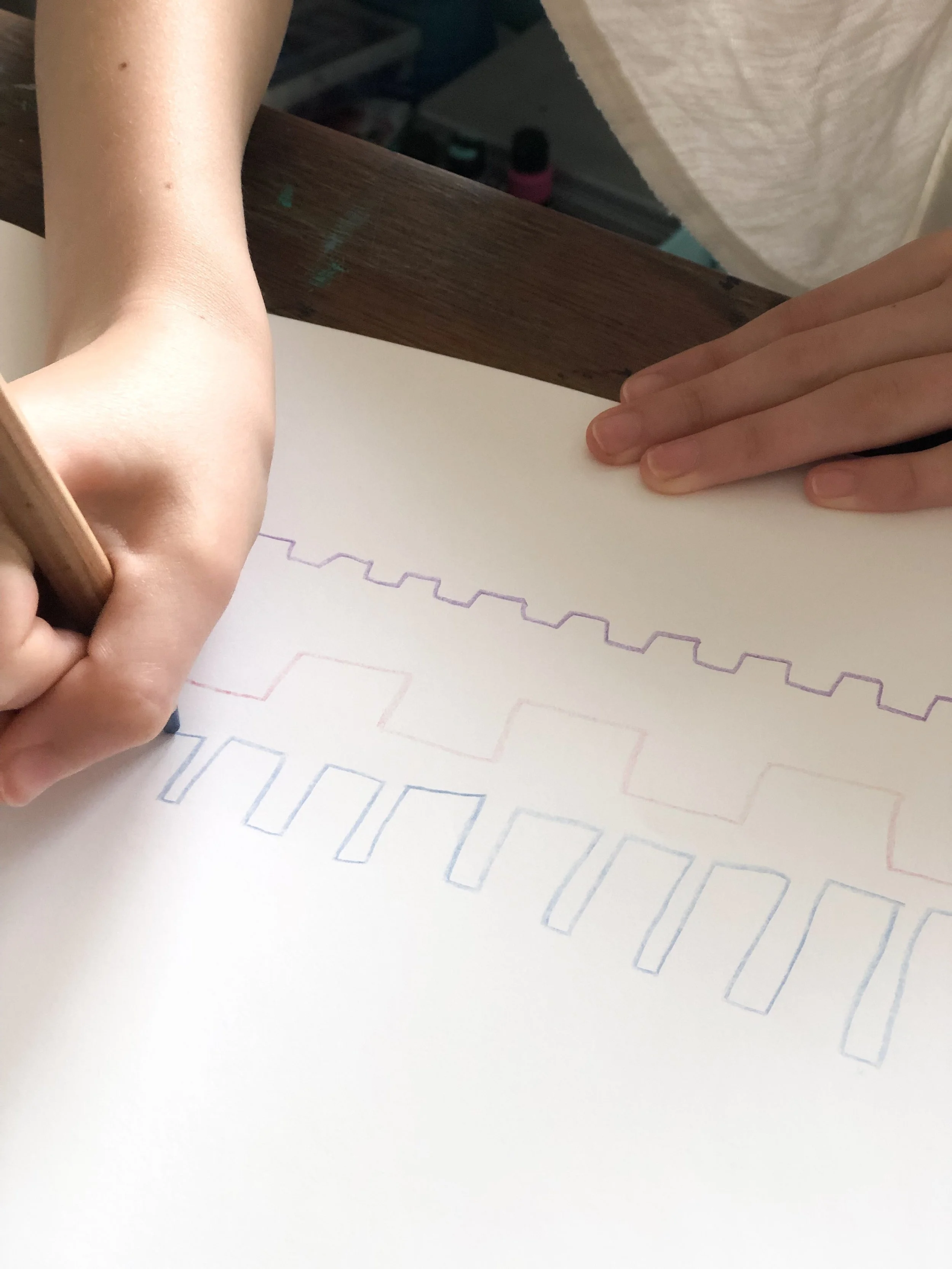
Waldorfish Blog
Waldorf Art at Home: Getting Your Supplies in Order
Creating a positive environment for your at-home art class requires a little bit of thought, planning, and intention.
A starting point? Give yourself a solid foundation.
This might look like finding a comfortable and large enough workspace, finding the right time of day that works best for your children and schedule…etc.
Here’s another one: getting your supplies in order!
Taking a little time to prepare your art supplies will make a big, positive impact!
Making art classes successful requires some prep, and in a way, the set-up, materials, and clean-up matter more than the lesson itself. If all of these things are handled, then you (and the students!) can focus, and truly enjoy and learn from the lesson at hand.
Looking at supply lists (especially for Waldorf art) can make your head spin a bit; it can feel like a lot of stuff, and expensive stuff at that.
How can you be sure you’ll actually use what you buy? Are there other alternative brands that will give you the same result? How do you store everything to keep it in good shape for the next class?
These questions are why we created our Waldorf Art for Beginners course!
In it, we give you the full walk-through of supplies you’ll need for Waldorf art. The kind of supplies you’ll actually want to use, and which brands provide quality in terms of experience and result. We share what we’ve learned from our many, many years of experience both in the classroom as well as homeschooling plus lessons learned from a lot of trial and error!
At this point, you may be asking yourself, “Does the specific kind of art supply really matter? Aren’t they all basically the same?”
We’re here to tell you that they definitely are NOT, and often, spending a bit more at the beginning will save you frustration and needing to spend more down the road.
Art class should feel enjoyable, fun, and like your time was used wisely to create and grow. We highly recommend controlling the variables that you can, and having the best supplies at hand will give you the best odds of results your artists are happy with.
A prepared, organized workspace leaves room for a peaceful, creative art class.
For example, let’s talk about painting paper, an item that seems fairly inconsequential in the grand scheme of painting, but actually really matters a LOT.
For watercolor painting, the paper needs to be thick enough to withstand the water, the friction of the brush, and the layers of paint. With that in place, the child can paint to their heart’s content without noticing the paper. Instead they’re noticing the experience, the color, and forming those skills and connections we strive for as educators!
But, without the right kind of paper, the lesson and experience becomes secondary. Too-thin paper will pill, rip easily, and not hold the pigment in a strong way. It is very frustrating for the child, as they aren’t able to create freely.
All this is to say: get the best supplies you can.
Not necessarily the most expensive, not the most “Waldorf”, but the items that will make the lesson, creativity, and experience central to the art class. You won’t regret it, we promise!
Our Waldorf Art for Beginners course is open for enrollment year-round, and provides a full, comprehensive walk-through of all things Waldorf art supplies: crayons, watercolor paints (and paper!), colored pencil, and more. PLUS instructor support, links to our favorite vendors, and forever access if ever you need to reference the course again for helpful reminders.
About the Authors
Robyn Beaufoy is Waldorfish’s CEO, and a course instructor for Waldorf Art for Beginners, Weekly Art Foundations, and Simple Season. You’ll find her intuitive touches and influences throughout everything Waldorfish offers! Robyn has been in the world of education for over 25 years, with an MA in Education and a certification in Waldorf teaching - she also homeschooled both of her children. In 2012 Robyn co-founded Waldorfish.com, creating it with the vision of making Waldorf inspired-art and pedagogy more accessible, joyful, and doable to homeschoolers all over the world.
Caitlin Amajor is Waldorfish’s course instructor for Geometry grades 5 & 6, and Botany, as well as our Administrative Assistant. From a young age, Caitlin has been immersed in Waldorf education, attending a Waldorf school from K-8. After receiving a BA in History, Caitlin gained her certification in Waldorf teaching, and spent seven years as a Waldorf class teacher in the upper grades. With a special fondness for watercolor painting and geometry, Caitlin loves bringing Waldorf education to her students all over the world, and seeing their own individuality and style bloom from the curriculum!
Waldorf Fifth Grade Botany: Growing with the Child
A fifth grade child is in a very interesting and important part of their development.
(Exciting news! Our Botany course is now open for enrollment! Click here to learn more!)
Students in this grade aren’t yet middle schoolers, and they also don’t feel as if they belong in the same space as a younger child anymore.
A fifth grader still has a sense of childlike wonder and imagination, but they are also beginning to gain interest in the more “realistic” world around them.
An educator’s chalk drawing of a dandelion, which is often studied in the first Botany block of the year.
I remember seeing my fifth graders out at recess near the beginning of the school year. They loved to play; skipping, laughing, playing “kitchen” with leaves and pine cones, searching for fairies in the garden.
At the end of the year, it was different. The students played more sports, especially with the older grade students , talked together in more private spaces, and complained about being “bored” (which always made me smile a little, what a teenager-y thing to say!)
This transition is bittersweet, but it is an important one.
I’ve found these two images to be helpful when thinking about a fifth grade child:
In one sense, they are coming down from the sky; the moon, the sun, stars and clouds, and finding their footing on earth. They are finding where they stand, and will work on finding a solid, confident footing throughout their pre-adolescent and teenage years (and beyond).
From trees, to plants and flowers, the Botany curriculum is vast and varied.
In a very real sense, the fifth grader is growing up, as if they were a seed breaking through the ground and beginning to sprout. In their younger years, a student is in the warm, safe care of their surroundings; they are being held, their potential still contained. But in this transitional year, they begin to sprout, grow, and stand on their own.
So, where does the curriculum come into this? (You knew we were going to tie this into the curriculum!) Among other subjects, we have one of the most important subjects of the year: Botany.
How does a seed grow to meet its fullest potential? What must it rely on to develop and grow? What happens when its needs aren’t met? What is its purpose, and how does it contribute to the health and well being of others in this world? What does it give, what does it take?
It may be hard to believe at first glance, but the botany curriculum really does ask and answer many (if not all) of these big questions in a subtle, yet impactful way, and the material grows with the child in a meaningful and purposeful way.
Let’s start at the beginning…
Traditionally, there are two botany blocks in the fifth grade, one in the fall and one in the spring (though of course, this varies from place to place).
Growth and change- a continuous theme through the Waldorf Botany blocks!
The first block begins in a soft, slow fashion. It is magical, and has a feel of mystery and wonder to it. Imagine a forest in a fairytale; one might find bright lichens clinging to the side of a shady tree, soft mosses where the princess rests, and algae that paints the running river with bright greens and blues. The teacher uses poetry, stories, and asks the students to use their senses as they study these special plants and fungi.
As the fifth grader is still in a more childlike and imaginative place, this first block meets them perfectly where they are in their development. Lichens and mosses rely on others, such as a sturdy tree trunk, to thrive and grow; just as the fifth grader is still more comfortable in the safe embrace of their imaginations and guidance of others.
The second botany block, usually done a few months later, shifts significantly in how the curriculum is presented, and what it includes. Trees and flowers are the main subjects studied, but in far more scientific detail than before.
Trees are now categorized into monocots and dicots by observing their different structures and characteristics; flowers are celebrated for their beauty, and also dissected carefully to identify their many parts, such as the petals, stigma, pistil, and more. The plants studied in this second block are far more independent in how they function, and have many individual features that make them unique and special in the vast plant world.
Botany main lesson book pages are an opportunity for students to show their own style, and illustrate what they’ve learned!
This is the developing fifth grader: ready to exercise more independence, beginning to discover themselves as individuals, and ready to enter a more realistic world.
As with all things in Waldorf education, the botany curriculum plays an important role in mirroring the development of the child. From its beginning, the botany blocks grow with the child. Starting with the plants that need a little more support and care from others, such as lichen clinging to tree branches, and ending with the independent, strong, and unique flower.
Simple to complex, dependence to more freedom, soft and magical to more formed and realistic. It’s all about growing up, and supporting the children to bloom into their best, most colorful and dynamic selves (botany pun intended!)
About the Authors
Robyn Beaufoy is Waldorfish’s CEO, and a course instructor for two of our courses - Waldorf Art for Beginners and Weekly Art Foundations. You’ll find her intuitive touches and influences throughout everything Waldorfish offers! Robyn has been in the world of education for almost 30 years, with an MA in Education and a certification in Waldorf teaching - she also homeschooled both of her children. In 2012 Robyn co-founded Waldorfish.com, creating it with the vision of making Waldorf inspired-art and pedagogy more accessible, joyful, and doable to homeschoolers all over the world.
Caitlin Amajor is Waldorfish’s course instructor for Geometry grades 5 & 6, and Botany, as well as our Administrative Assistant. From a young age, Caitlin has been immersed in Waldorf education, attending a Waldorf school from K-8. After receiving a BA in History, Caitlin gained her certification in Waldorf teaching, and spent seven years as a Waldorf class teacher in the upper grades. With a special fondness for watercolor painting and geometry, Caitlin loves bringing Waldorf education to her students all over the world, and seeing their own individuality and style bloom from the curriculum!
more on the blog…
Merging Occupational Therapy with Waldorf Homeschooling
Enjoy this special piece fromWaldorfish guest writer, Kristin Palen!
She’ll be looking at how to support your child using a Waldorf inspired, holistic learning approach from an occupational therapy perspective.
What is an Occupational Therapist?
An Occupational Therapist (OT) helps people of all ages participate in purposeful and meaningful activities through the therapeutic use of occupations. A child’s occupations are embedded in play!
Waldorf education and OT therapy agree: play is powerful!
Think of the developmental skills that encompass play: sensory processing, self regulation, sensory motor, executive functioning, perceptual motor, gross and fine motor skills. What are these skills essential for: effective learning!
OT is holistic, individualized and child centered - treating their mind, body and soul. OT utilizes evidence-based practices with assessment, clinical reasoning and task analysis to facilitate a child’s successful participation in their occupations by adapting, modifying, and enhancing the environment and task to foster independence.
Blending OT and Homeschooling
I truly love being an OT. The mix of science, human connection and thinking outside the box gets my creativity flowing!
When we first began homeschooling 7 years ago , I structured our day similar to an OT session. I developed a daily rhythm balancing calming with alerting multi sensory activities, attuning to my child’s needs. My child gravitated towards outdoor exploration, thus much of our day was spent outside encouraging open ended play. Our schedule was created with intention being cognizant of over stimulation. (By the way, if you’re wanting some support in your OWN homeschool planning, click here!)
Doesn’t this sound similar to Waldorf?
At the time, I had a basic understanding of Waldorf philosophy. When I dove into the foundations, I discovered rhythm was at the forefront and reaching the whole child through their head, heart and hands. This was what I was already naturally creating!
“OT and Waldorf Education seamlessly blend together in a harmonious manner using a holistic approach to facilitate connection, bonding, and creative exploration. ”
Steiner said it himself, “Where is the book in which the teacher can read about what teaching is? The child themselves are the book.” (Steiner, Rhythms of Learning). The beauty of homeschooling is curating and individualizing a curriculum for your child, which is the essence of OT!
Fast forward 5 years, I have two children ages 10 and 4 who I have been homeschooling using a Waldorf inspired approach, with added OT flare!
Play doesn’t need to be complicated- let your child be the guide!
So you might be wondering how this can help you if you are not an OT?
I will demonstrate how to utilize a holistic approach in your homeschooling rhythm to facilitate successful learning with four guiding principles to follow when devising your lesson plans. This will ensure that you are using a child centered approach to customize any curriculum specifically for your child.
Place connection at the forefront.
Waldorf homeschoolers are masters at holding the space. We attune to our child’s needs, creating flexibility in our rhythm. We adjust our presence to the ebb and flow of our child’s emotions enabling them to feel in control and connected. If we notice our child is resistant or withdrawing from a lesson it is our responsibility to investigate what is underlying the behavior. Then we can make adjustments to facilitate emotional regulation, which in turn will improve their overall engagement and interest.
Use interest led learning strategies.
Naturally weave your child’s interests directly into the lessons. Think about what is motivating, their passions, and what sparks their creativity; create lessons around those interests. Then they can be fully immersed and absorb the lesson. For example, my son is interested in woodworking. Our lessons incorporate this; our main lesson books may not be as filled as others, but he is motivated and participating in experiential learning activities.
Incorporate your child’s strengths.
Set up your child for success by gearing your lessons around your child’s strengths. What is their learning style; are they a kinesthetic, visual, or auditory learner, etc. and how can you utilize these strengths to optimize their engagement? Observe them closely and their sensory preferences. For example, decide if they are more inclined to seek out movement with kinesthetic activities, tactile (touch) input, visual demonstrations, or through auditory input with singing. If your child is more focused and attentive with specific sensory activities, make those a priority in your lessons.
Adapt the lesson and environment to your child’s needs.
Think about how you can adapt the environment and lessons to optimize your child’s learning. How can you structure your daily rhythm and lesson plans to support your child? Your child may benefit from shorter lessons throughout the day; they may be more regulated doing lessons outside; they may be more motivated if lessons involve playing games, adjust accordingly.
The emphasis above is to focus and connect with the child in front of you! Try not to get caught with what they “should” be doing, instead follow Steiner’s advice, meet them where they are, let that guide your lessons.
We want our children to feel connected with themselves, with us and their environment so they can be confident to let their minds soar. This instills the confidence to face challenging and unpredictable life experiences. If a child seems uninterested, reluctant, or bored with an activity, search for direction with the guiding principles above.
Try placing connection with your child at the forefront of your daily routine- you’ll be amazed at what comes!
“The basis of Waldorf Education is to create independent and creative thinkers. We want to be cognizant of the whole child by problem solving how to adapt, modify, customize and facilitate an experience that will empower our children to guide their lifelong learning! ”
Following these guiding principles will lead you in the direction of bringing meaning, purpose and joy to your child; my ultimate goal as an OT!
How to connect with Kristin:
Kristin Palen, OTR/L is homeschool mom and an occupational therapist with over 19 years of experience solely in pediatrics. Kristin is the owner of Coastal Connections Pediatric Therapy, in the Outer Banks North Carolina. Her practice provides direct nature based occupational therapy services, virtual parent coaching and masterclasses coming soon. Kristin’s areas of interest and specialty are sensory integration, emotional regulation, and nature based occupational therapy. Being part of a neurodiverse family Kristin particularly enjoys supporting and coaching fellow neurodiverse homeschool families to adapt, accommodate and meet the needs of their unique children.
Website: www.coastalconnectionsot.com
4 Tips for Planning Your Homeschool Curriculum
Whether you’re a home or classroom educator, summer involves a different kind of work for many of us: preparation for the year to come!
I’m all about prepping for the future school year, but I’m also a huge believer that a teacher must actually take a break and recharge! For educators who are at-home or in a classroom, preparation is key to a successful year, but it can also become all consuming and stressful, and can burn-out an educator before the school year has even begun. In most Waldorf schools, and in the homeschool classroom, we move on to a new grade every year- which means learning and prepping new material every year!
When I started teaching, I prepped for hours every day during the summer, and yet, I also still prepped for hours during the school year. Why so much? Because I wasn’t working in a smart way- somehow along the road, I associated lots of prep with success (more work, more reward!) but I quickly learned this was very inaccurate.
Working smart gives more reward.
Here’s some things I learned (and asked myself) along the way to preparing wisely, and finding balance in prepping for a new year.
How do I learn the best?
When I first began teaching nearly ten years ago, I was given a big box of thick books to read over the summer as my prep materials. I would spend hours, and hours (and hours!) trying to trudge my way through them, taking copious notes and trying to squeeze out the information I would actually use for future blocks.
What new planning methods are you going to try?
However, I came to realize something about myself- I am a slow reader. I enjoy reading, and like to take my time. Trying to rush through a dense book, and desperately trying to identify any helpful information gave me a stress headache, and was slow (like...tortoise slow) going. So, I reassessed.
How do I learn best? How do I retain information well?
For me, it’s through auditory learning. Give me an audio book, or listen to a documentary, and I’ll be good to go, especially if I can keep my hands busy. I’d often draw future chalkboard drawings/MLB pages while listening to my prep. Not only did my days get less headache-y, but I was working smarter! So ask yourself, how do you learn best, and go with it! Honor how you learn, and don’t feel like you “have” to prep in some specific way. It’s got to work for you!
What are my strengths and areas of weakness?
Prep smart! I learned to take my summer months to prep for those things I struggled with, and knew the least about. For these blocks, I needed sufficient time to gain my confidence and feel strong enough to bring the material to my students. For me, these blocks were always having to do with science and math. So I took my time in the meandering summer hours to practice chemistry experiments or complicated algebra without the stress of having to teach it the next day.
How can your interests help you become a better planner?
On the other hand, my personal strengths are in history and language arts, so I would prepare for these blocks in the summer by listening to documentaries, podcasts, and reading children’s books – I made general outlines of what I wanted to accomplish, and the skills I wanted to highlight for my students. I knew that when these blocks came around in the school year, I’d be familiar with the material well enough to do my prep the weekend or evening before, without much stress or anxiety.
So, ask yourself- where does my stress lie, and what can I do to mitigate it?
Do you want to take an hour everyday to draw? A once-a-week “science day”? A week dedicated to practicing woven forms? What will help you gain confidence, and what subjects can be put off for a little while without stress?
Focus on those areas where you feel less than confident in these summer weeks where you have the gift of time- you won’t regret it!
Choose materials made for children.
In Waldorf education, we’re all about painting pictures with words, setting a scene, and enlivening stories of the past with language. So why not prep by using stories? Once I discovered the youth/children's section of the library, I fell in love and jumped for joy.
“Children’s books offer so much to us as teachers- there is beautiful language, images, and more that we can be inspired by!”
A change of scenery can be a source of inspiration- try somewhere new!
Can you create your own stories and images as you see fit? Of course! But why not start with materials meant to be seen through a child’s eyes? Supplement with other materials as well if you choose, and build your lessons with a little boost from established authors, historians, and mathematicians.
Where can I add a little something special? (And also give myself a little break!)
As educators, we are used to holding each and every day and many subjects by ourselves. Some are lucky to have the support of specialty teachers, but in general, we are still holding the whole picture of the day. It can be a lot!
So- can you give yourself a moment or two during a block where you don’t have to hold the whole lesson by yourself?
Where would be a good place to bring in a guest speaker?
Visit a museum with a docent?
Go on a hike for student-lead nature observation?
Of course, you’ll still have planning on your part, but there is so much value in having your students or child learn from someone else or be given space to work independently, and to allow you to step back for a moment! I would suggest adding these special activities especially in blocks that are not one of your “strengths.”
“As educators, we aren’t always good at asking for or giving ourselves support, but we really want to encourage you to work smart, and allow yourself the gift of help and time. I’ll say it again- give yourself the gift of help and time! ”
What resources can provide support to enlivening your curriculum?
At Waldorfish, we offer fully online courses built for educators and/or students that do so much of the prep for you! Instead of having to start from zero, our courses provide a full block or year’s worth of content, along with detailed supply lists and support from our experienced instructors.
*So, where do you need support?
Art, geometry, science courses, watercolor painting, form drawing, inspiration for festival life?
Start here and let the stress go, we’ve got you!
Sit back for a moment, have a sip of iced coffee (that’s what we’re drinking in blazing California, at least!) and reflect upon your remaining weeks of summer.
How can you prep smart, and take plenty of time to rest, rejuvenate, and enjoy?
More support for your planning:
About the Author:
Caitlin Amajor taught in the Waldorf middle school for seven years, and is also a Waldorf student herself. She currently works as an administrative assistant for Waldorfish, and is also the instructor for their grades 5 and 6 geometry courses. Caitlin enjoys baking, gardening, and spending time with friends and family.
Looking for something?
Welcome to Waldorfish! We started this adventure in 2012 out of a desire to make Waldorf training more accessible to class teachers in remote locations and to homeschooling families everywhere! Read more, click here.
WE WON! Our Weekly Art courses were voted “best interactive art program.” Learn more about the award, here.
A few of our most popular blog posts:
